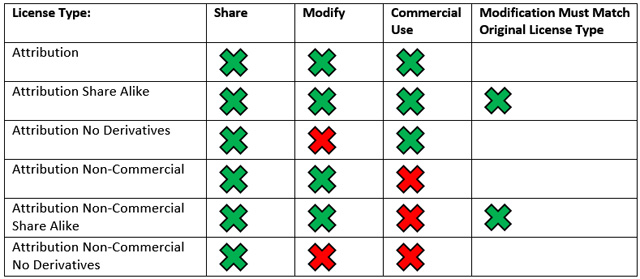(by Lynnae Van Voorthuysen, media relations associate.)
Story Maps often use lots of photos and images. While in the midst of creating a compelling story map, it may seem logical to add some pizazz or fill in a few gaps by quickly pulling a few images from an online image search. Easy? Yes. Legal? Probably not.
What is copyright and why does it exist?
To encourage creativity, the U.S. Constitution includes the Copyright Clause which gives authors of an original creative work (photograph, graphic, music, literature, etc.) exclusive rights to their work for a limited time. With these rights, copyright holders control the reproduction, distribution, performance, and modification of their work. Copyright exists to secure the financial profits that creative works merit.
How do I know if an image is copyrighted?
Public Domain images are not copyrighted. Content is added to the public domain when copyright holders release their work into the public domain, a copyright expires, or copyright exempt work (e.g. Federal government projects) is created.
Creative Commons falls between public domain and all rights reserved. There are six license types, and all require crediting the author by linking to the license and noting any modifications you make. Make sure the license matches your project goals.

Pay per image is another option, if neither the public domain nor creative commons have what you are looking for.
No one has time to monitor this, right?
Actually, yes. The owner of the content can request a “DMCA takedown” for content that is being used without permission. The Digital Millennium Copyright Act is a U.S. copyright law created to protect Internet service providers from user-generated content copyright liability.
As long as providers comply with the DMCA takedown rules, they are not liable for the copyright infringement of their users. Therefore, it is likely that the provider hosting your content will take down your content to avoid sustaining a copyright infringement claim.
What’s the takeaway?
It is important to respect the creative work of others. Copyright infringement is not primarily about illegally profiting from others’ work but about denying artists the fruits of their labor. Let’s move forward giving credit to creative endeavors by using creative commons or public domain images, or purchasing photos, for our Story Maps.
Story Maps often use lots of photos and images. While in the midst of creating a compelling story map, it may seem logical to add some pizazz or fill in a few gaps by quickly pulling a few images from an online image search. Easy? Yes. Legal? Probably not.
What is copyright and why does it exist?
To encourage creativity, the U.S. Constitution includes the Copyright Clause which gives authors of an original creative work (photograph, graphic, music, literature, etc.) exclusive rights to their work for a limited time. With these rights, copyright holders control the reproduction, distribution, performance, and modification of their work. Copyright exists to secure the financial profits that creative works merit.
How do I know if an image is copyrighted?
- Assume every image you see online is copyrighted.
- U.S. law no longer requires the use of a copyright notice, so the*© does not need to be there in order to copyright a work.
- Any original work that contains an element of creativity and is recorded on paper, a hard drive, or any physical form is copyrighted.
- Ask and recieve the author’s permission to use the image.
- Don’t simply provide a link and call it good. Attribution is courteous, but it does NOT negate copyright infringement.
- Modifying an image with photo editing software does NOT nullify the existing copyright or create a new copyright for you.
Public Domain images are not copyrighted. Content is added to the public domain when copyright holders release their work into the public domain, a copyright expires, or copyright exempt work (e.g. Federal government projects) is created.
Creative Commons falls between public domain and all rights reserved. There are six license types, and all require crediting the author by linking to the license and noting any modifications you make. Make sure the license matches your project goals.

Pay per image is another option, if neither the public domain nor creative commons have what you are looking for.
No one has time to monitor this, right?
Actually, yes. The owner of the content can request a “DMCA takedown” for content that is being used without permission. The Digital Millennium Copyright Act is a U.S. copyright law created to protect Internet service providers from user-generated content copyright liability.
As long as providers comply with the DMCA takedown rules, they are not liable for the copyright infringement of their users. Therefore, it is likely that the provider hosting your content will take down your content to avoid sustaining a copyright infringement claim.
What’s the takeaway?
It is important to respect the creative work of others. Copyright infringement is not primarily about illegally profiting from others’ work but about denying artists the fruits of their labor. Let’s move forward giving credit to creative endeavors by using creative commons or public domain images, or purchasing photos, for our Story Maps.
